


Eating for better
health
The better we eat, the better we feel.
Along with sleep and exercise, diet is a key pillar of physical and mental health.
The foods we eat give us the energy and nutrients we need to stay healthy, for our bodies to function well and to give us a better quality of life.
A good diet doesn’t just get us through the day.
It benefits us throughout our entire lives.
A balanced diet usually features nutrient-dense foods from all the main food groups – lean proteins, whole grains, healthy fats, and a variety of fruits and vegetables.
There’s a long list of benefits from following a healthy diet.
It helps maintain a healthy body weight.
It keeps our immune system strong, protects us against infection, reduces the risks of developing serious health conditions like type-2 diabetes, heart disease, stroke and some cancers, and allows you to live longer.
What is a healthy diet?
No single food can give us all the nutrients that our bodies need.
According to the World Health Organization (WHO), for good health and nutrition, it’s essential we eat a variety of foods and consume less salt, sugars and saturated and trans-fats often found in fried take-away foods and some doughnuts, pies, pastries, cakes, biscuits and crunchy snack foods.
The variety of nutritious foods we need to eat are from five different food groups.
In the simplest terms, you should try to eat a selection of these foods every day.
- Vegetables, including different types and colours, and legumes/beans
- Some fruits in a variety of colours
- Grains or cereals, mostly wholegrain and/or high cereal fibre varieties, such as breads, cereals, rice, pasta, noodles, polenta, couscous, oats, quinoa and barley
- Lean meat, poultry, fish, eggs, tofu, nuts and seeds, and legumes/beans
- Milk, yoghurt, cheese and their alternatives, mostly reduced fat
How to choose the foods we need
The dietary guidelines outlined by the Australian government tell us that to eat well to be well (getting all the nutrients you need), it’s good to eat a variety of foods from each of the five groups every day.
You don’t need to eat from every group at every meal but try and cover all the food groups each day or over a week.
Mixing it up from within each group is also good, as different foods offer different nutrients.
For instance, orange vegetables, such as carrots and pumpkins, contain significantly more vitamin A than other vegetables, such as white potatoes.
If you want to learn more about this, the government’s Eat for Health website is a great place to start.
Don’t forget to drink
Fluids are essential for the body to function.
All your body’s organs, tissues and cells need fluids to keep working properly.
As a guide, try to have eight to ten glasses of fluid a day.
Try and make this mostly water but you can also get it from fruit juice, smoothies, soup and milk.
Drinking alcohol carries health risks, including weight gain and an increased risk of heart disease, diabetes, and certain cancers.
If you do choose to drink, aim to limit your intake to no more than 10 standard drinks per week, with no more than 4 standard drinks in a single day.
Similarly, sugary drinks also come with health risks, such as contributing to weight gain and dental issues.
Energy drinks, on the other hand, can disrupt sleep, causing insomnia, and may lead to increased stress and other health issues.
Eat together to eat well
What you eat and drink is essential, but how you eat is important, too.
When you eat with others at the table, chances are you’ll eat better and more regularly than if you eat alone in front of the TV.
Meals with others usually include a greater variety of foods from the different food groups.
And let’s not forget that preparing meals and eating together is a great way to enjoy your food and socialise, which are important to feel good and happy and boost your mental wellbeing.
If you’d like to learn more about eating well, the five food groups, and more tips for healthy eating, we found these websites full of helpful information.
Sources and resources
- Live Lighter
- Food and your mood – Better Health
- Why eat well – Cancer Council
- Food and nutrition – health.gov.au
- Eating well – Eat for Health
- What are the benefits of eating healthy? – Medical News Today
- Eating well – Preventative Health SA
- Healthy diet – World Health Organization
